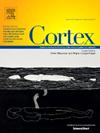在第三人称环境中建立人际不适评级模型:一项探索性研究
IF 3.2
2区 心理学
Q1 BEHAVIORAL SCIENCES
引用次数: 0
摘要
“个人”和“周边”空间是两个概念,用来描述靠近身体的空间。别人侵入个人空间,会引起不舒服的感觉;对位于私人空间内的物体的反应是方便的。周边个人空间内的响应简化通常遵循s型趋势,在中心点附近急剧增加,这被定义为其边界。我们探讨了侵入个人空间是否会导致不适的急剧转变,以及这种转变的距离是否与人格特质有关。对45名参与者进行了计算机化的不适判断任务。每次试验都在屏幕上展示两个面对面的全高人体剪影,以200到16厘米的模拟距离分开,假设剪影高度为175厘米。12个人际距离的呈现顺序,从长到短,创造了一种接近的印象。在每次试验中,参与者都把自己想象成两种轮廓中的一种,并对自己的不适程度进行评分。每个距离的个体响应中位数使用s型、线性或幂律函数进行近似。计算个体乙状结肠功能的中心拐点,并将其与参与者在社交焦虑、大五量表和运动(不协调)方面的得分相关联。随着模拟轮廓之间的距离减小,不舒服的评分也随之增加。在38名参与者中,与线性或幂律函数相比,获得的评分中位数序列更有效地近似于s型函数。中心点越远,社交焦虑、运动障碍和神经质程度越高,亲和力越低。不适的s形变化确实反映了周围空间边界,但这种相似性仍然是推测性的,需要进一步的研究来澄清是否涉及共同的机制。基于内在主观感受的不适判断可以作为个人距离限制的定量代理。本文章由计算机程序翻译,如有差异,请以英文原文为准。
Modelling interpersonal discomfort ratings in third-person settings: An exploratory study
“Personal” and “peripersonal” spaces are two concepts describing the space close to the body. Intrusion of others into the personal space, provokes a feeling of discomfort; responses to objects situated within peripersonal space are facilitated. Facilitation of responses within peripersonal space typically follow a sigmoid trend, with a sharp increase around a central point, that is defined as its boundary. We explored if intrusion into personal space makes such a steep transition in discomfort and whether the distance of this transition is related to personality traits.
A computerized discomfort judgement task was administered to 45 participants. Each trial presented two full-height human silhouettes facing each other on a screen, separated by simulated distances from 200 to 16 cm, based on an assumed silhouette height of 175 cm. The order of presentation of 12 interpersonal distances, from longest to shortest, created an impression of approach. For each trial, participants imaged themselves as one of the two silhouettes and rated their discomfort. The individual response medians for each distance were approximated using sigmoid, linear or power law functions. The central points of inflection for individual sigmoid functions were calculated and correlated with participants' scores for social anxiety, the Big Five Inventory, and motor (dis)coordination.
Discomfort ratings increased as the simulated distance between silhouettes decreased. The obtained sequences of rating medians were approximated more efficiently with sigmoid compared to linear or power law functions in 38 participants. More distant central points can be associated with higher social anxiety, dyspraxia and neuroticism, and lower agreeableness.
The sigmoid shape of discomfort changes indeed mirrors that of peripersonal space boundaries, but this resemblance remains speculative and requires further investigation to clarify whether common mechanisms are involved. Discomfort judgments based on internal subjective feelings may serve as a quantitative proxy for personal distance limits.
求助全文
通过发布文献求助,成功后即可免费获取论文全文。
去求助
来源期刊

Cortex
医学-行为科学
CiteScore
7.00
自引率
5.60%
发文量
250
审稿时长
74 days
期刊介绍:
CORTEX is an international journal devoted to the study of cognition and of the relationship between the nervous system and mental processes, particularly as these are reflected in the behaviour of patients with acquired brain lesions, normal volunteers, children with typical and atypical development, and in the activation of brain regions and systems as recorded by functional neuroimaging techniques. It was founded in 1964 by Ennio De Renzi.
 求助内容:
求助内容: 应助结果提醒方式:
应助结果提醒方式:


